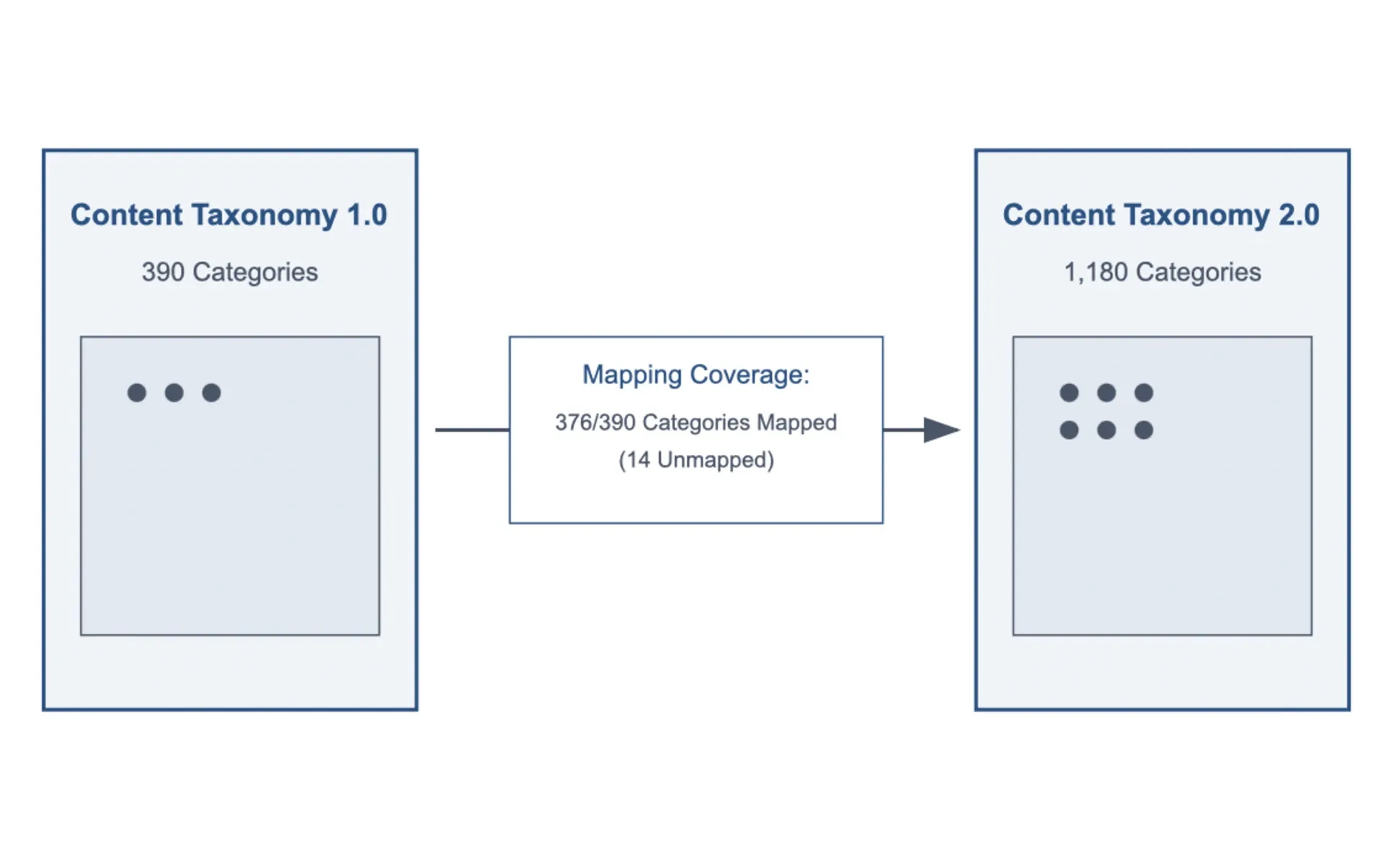IAB Tech Lab releases Content Taxonomy mapping
New mapping enables upgrade from Content 1.0 to 2.0, addressing decade-old taxonomy issues in digital advertising industry.

The Interactive Advertising Bureau Technology Laboratory (IAB Tech Lab) released the official mapping between Content Taxonomy 1.0 and Content Taxonomy 2.0 on January 29, 2025, marking a significant development in digital advertising standardization. The release comes four days ago, following a public comment period and extensive review by the organization's Taxonomy and Mapping Working Group.
According to the technical documentation released by IAB Tech Lab, Content Taxonomy 2.0 contains 1,180 categories, nearly tripling the approximately 390 categories available in version 1.0, which was originally released in 2011 and officially deprecated in July 2020.
The mapping provides a structured transition path between the two versions, with only fourteen categories out of nearly four hundred Content 1.0 classifications lacking direct Content 2.0 counterparts. Nine of these categories have corresponding matches in Content Taxonomy 2.2, while five categories can be retained in existing implementations if necessary.
A notable technical advancement in Content Taxonomy 2.0 is the introduction of vectors, which separate content topics from their presentation methods. This architectural change enables more precise content classification. For instance, social media content about theme parks can now be categorized with both topical categories like "Family Travel" and "Amusement and Theme Parks," while simultaneously using vector categories such as "Social" and "General Social" to describe the content's distribution channel and type.
The mapping documentation specifies that Content Taxonomy 2.0 decouples content subject matter from presentation through the implementation of vectors. These vectors function as categories describing non-topical aspects of content that impact advertising placement decisions.
The technical implementation guidance, published alongside the mapping, outlines several key considerations for organizations transitioning between taxonomies:
- Parent-child relationships maintain hierarchical structures similar to family trees
- Child categories represent specific sub-areas of parent categories
- Implementation teams must review each content piece currently labeled with Tier 1 categories from Content 1.0
- Majority of rows have 1:1 mapping correlations
- Small number of cases present many-to-one mapping scenarios
The mapping implementation has been structured in both human and machine-readable format, provided as a .tsv file in the IAB Tech Lab's GitHub repository. This format enables programmatic integration while maintaining accessibility for manual review and implementation.
Looking ahead, the IAB Tech Lab's Taxonomy and Mapping Working Group has completed additional work on genres, reflected in the newly released Content Taxonomy 3.1. These updates address emerging advertising channels and evolving industry requirements.
The technical implications of remaining on Content Taxonomy 1.0 include limitations in supporting new advertising formats, particularly in programmatic Connected TV advertising, in-game advertising, and emerging ad formats. These limitations become more significant against the background of privacy regulations and the anticipated deprecation of third-party cookies.
Industry participants currently utilizing Content Taxonomy 1.0 for contextual targeting face technical constraints in supporting contemporary advertising use cases. The new mapping provides a structured upgrade path through Content Taxonomy 2.0 or 2.2, ultimately enabling progression to Content Taxonomy 3.1.
The mapping release originated from a donation by Subtextive, which developed the initial mapping using an artificial intelligence-based taxonomy mapping toolkit. The IAB Tech Lab's working group, comprising 112 companies across the programmatic advertising ecosystem, then validated and refined the mapping following standard protocols.

